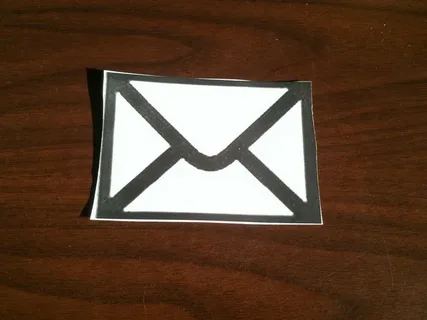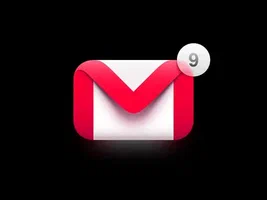In the world of digital communication, the icons we interact with daily carry more than just operational value—they reflect mood, style, and identity. Among them, the mail icon is one of the most frequently seen, yet often overlooked elements of interface design.
Traditionally used to represent email or messaging features, the mail aesthetic icon has become much more than a utility. Today, it represents an intersection between usability and beauty—a small, stylish object that conveys communication, but also emotion, branding, and personality.
In this article, we’ll explore how the mail aesthetic icon has evolved, why it’s more than just a decorative choice, and how designers and users alike are embracing its visual transformation.
The Function Behind the Form
Every icon on a user interface (UI) has a job. The mail icon’s job is simple: tell the user where to send, receive, or check messages. In its rawest form, this icon might be nothing more than a tiny envelope or paper plane.
However, in an era dominated by visuals, functionality is just the beginning.
Why does the aesthetic of a mail icon matter?
Because users no longer just click—they experience. Every visual element contributes to how an app or website feels. A sharp, modern mail icon might suggest a business-like platform, while a rounded, pastel-toned envelope might imply a more personal, casual space.
The Visual Evolution of Mail Icons
Let’s briefly look at how mail icons have changed:
1. Early Interfaces – Utility Above All
In the early 2000s, mail icons were purely symbolic—gray or blue envelopes, pixelated and sharp-edged. Their sole purpose was to be recognizable and simple. They had no emotion, no style, and certainly no customization.
2. The Rise of Mobile UI – Icons as Brand Representatives
As mobile apps took over, icons needed to stand out. Developers created colorful, stylized mail icons as app launchers—think Gmail’s red M or Apple Mail’s stamp design. The icon became a preview of the app’s personality.
3. Flat and Material Design – The Minimalism Wave
Designers shifted to clean lines and simple shapes. Skeuomorphism (realistic effects) was out; flat vectors were in. Mail icons became flatter, bolder, and more geometric. While still clean, many lost a bit of warmth.
4. The Aesthetic Era – Icons with Emotion
Now, we’re in a phase where design is personal. From custom iOS home screens to tailored dashboard themes, users and brands want their interfaces to feel a certain way. Aesthetic icons—especially mail ones—are created to match that mood, be it soft, retro, futuristic, or cozy.
What Makes a Mail Icon “Aesthetic”?
“Aesthetic” is subjective, but in UI and graphic design, certain characteristics set these icons apart:
1. Thoughtful Color Schemes
Whether it’s muted pastels or bold gradients, aesthetic icons use color to convey feeling. A dusty pink envelope feels gentle, while a glowing cyan paper plane feels dynamic.
2. Stylized Forms
Instead of basic rectangles, aesthetic icons may feature curved corners, hand-drawn outlines, or minimal geometric shapes.
3. Animation & Interaction
Some aesthetic icons gently move, light up, or bounce when clicked or when a new message arrives. These micro-interactions add delight without disrupting the experience.
4. Contextual Fit
An aesthetic mail icon isn’t just made to look pretty. It aligns with the overall interface—whether the rest of the design is vintage, techie, cozy, elegant, or artsy.

Popular Styles of Aesthetic Mail Icons
Depending on the target audience and platform, aesthetic mail icons vary widely in tone and form. Here are some of the most popular styles:
1. Soft & Pastel Icons
- Common in lifestyle, wellness, or journaling apps.
- Uses gentle tones like blush pink, lavender, sky blue, and cream.
- Often features rounded shapes, minimal lines, and soft shadows.
2. Hand-Drawn or Sketch Style
- Mimics pencil or ink drawings.
- Appeals to artistic or DIY-style platforms.
- Imperfections are part of the charm.
3. Vintage or Retro Icons
- Inspired by old mailboxes, wax seals, and paper textures.
- Works well in nostalgia-themed websites or print-focused services.
4. Futuristic / Cyber Aesthetic
- Uses neon, metallics, or digital glitch effects.
- Often animated or layered.
- Perfect for tech brands, games, or Web3 projects.
5. Flat Minimalist Icons
- Keeps it simple with 2-3 colors, clear shapes, and no texture.
- Common in productivity apps or professional platforms.
Where Aesthetic Mail Icons Appear
These icons can show up in multiple digital environments. Let’s take a closer look:
1. Mobile Apps
Mail apps (like Spark, Airmail, ProtonMail) use customized icons to stand out. Custom launchers on Android and iOS also allow users to swap in aesthetic icon packs for their home screens.
2. Website Contact Pages
Instead of a generic “email me” button, many websites now include stylized mail icons to make contact sections more engaging.
3. Portfolio Designs
Designers and freelancers often use unique icons to personalize their “get in touch” sections.
4. Productivity Dashboards
Task management tools use mail icons for notifications, message centers, or inbox sorting.
5. Custom Icon Packs
On marketplaces like Etsy, Gumroad, or UI libraries, users download icon sets to theme their phones, blogs, or templates.
Creating Your Own Mail Aesthetic Icon
Designing a mail icon that fits your aesthetic doesn’t require you to be a professional designer—though it helps. Here’s a simple guide:
Step 1: Choose Your Vibe
Think about the tone: Calm? Bold? Vintage? Futuristic? Define your visual identity before designing.
Step 2: Select a Tool
- Beginners: Canva or IconScout
- Intermediate: Figma or Adobe XD
- Advanced: Illustrator or Procreate (especially for hand-drawn styles)
Step 3: Start with Basic Shapes
The classic envelope works well as a base. Then build in your visual elements: curved lines, drop shadows, outlines, or color overlays.
Step 4: Add the Finishing Touches
Play with color blending, gradients, or shadows to add dimension. Consider how your icon looks on light and dark backgrounds.
Step 5: Export in Multiple Sizes
Save the icon in PNG and SVG for different uses—favicon, app icon, contact button, etc.
Design Tips for a Cohesive Look
If you’re using mail icons as part of a larger UI or theme pack, remember:
- Keep line weights consistent with other icons.
- Use a shared color palette across all icons.
- Stick to one style (e.g., all hand-drawn or all flat).
- Consider motion design for alerts or notifications.
Mail Icon Psychology: More Than Meets the Eye
Icons work fast—faster than text. They rely on instinct and recognition. The envelope symbolizes trust, communication, privacy, and connection.
Making this icon “aesthetic” doesn’t just dress it up; it enhances how users feel about using the product:
- A minimal icon feels efficient.
- A soft icon feels inviting.
- A retro icon feels personal.
- A neon icon feels innovative.
FAQs About Mail Aesthetic Icons
Q1: What qualifies an icon as “aesthetic”?
An aesthetic icon is visually intentional—designed to match a certain theme, mood, or style. It goes beyond default icons to enhance the emotional or artistic appeal of an interface.
Q2: Can I change the mail icon on my phone or website?
Yes. You can use custom launchers on Android or Shortcuts on iOS to change app icons. On websites, mail icons can be swapped using CSS or by uploading your own image/icon.
Q3: Where can I find free or premium aesthetic mail icons?
Design marketplaces, icon libraries, and design software all offer icon packs. Just ensure you follow the licensing guidelines for personal or commercial use.
Q4: Do aesthetic icons affect performance or load times?
Generally no, especially if exported properly. Avoid overly large SVGs or unoptimized animations, and you’re good to go.
Q5: What’s the best style for a business or corporate website?
Stick with clean, minimalist icons in your brand’s colors. You can still use an aesthetic version—it just needs to reflect professionalism.
Q6: Should icons be consistent across platforms?
Yes. If you’re using a stylized mail icon on your website, try to keep the same or a similar one in your email signature, mobile app, and other branded assets.
Q7: Can I animate my mail icon for better engagement?
Yes, simple animations like a gentle bounce, pulse, or fade can make the icon more noticeable and engaging. Just don’t overdo it—it should feel smooth and subtle.
Final Thoughts
The mail aesthetic icon is a powerful blend of form and function. It’s no longer just a symbol of digital communication—it’s a canvas for creativity, a branding tool, and a UX element that carries emotional and visual weight.
Whether you’re a designer customizing a user interface or a user personalizing your home screen, this small icon holds big potential. With the right aesthetic, a mail icon can do more than indicate a message—it can make one.\
Must Visit: globalfxhub
